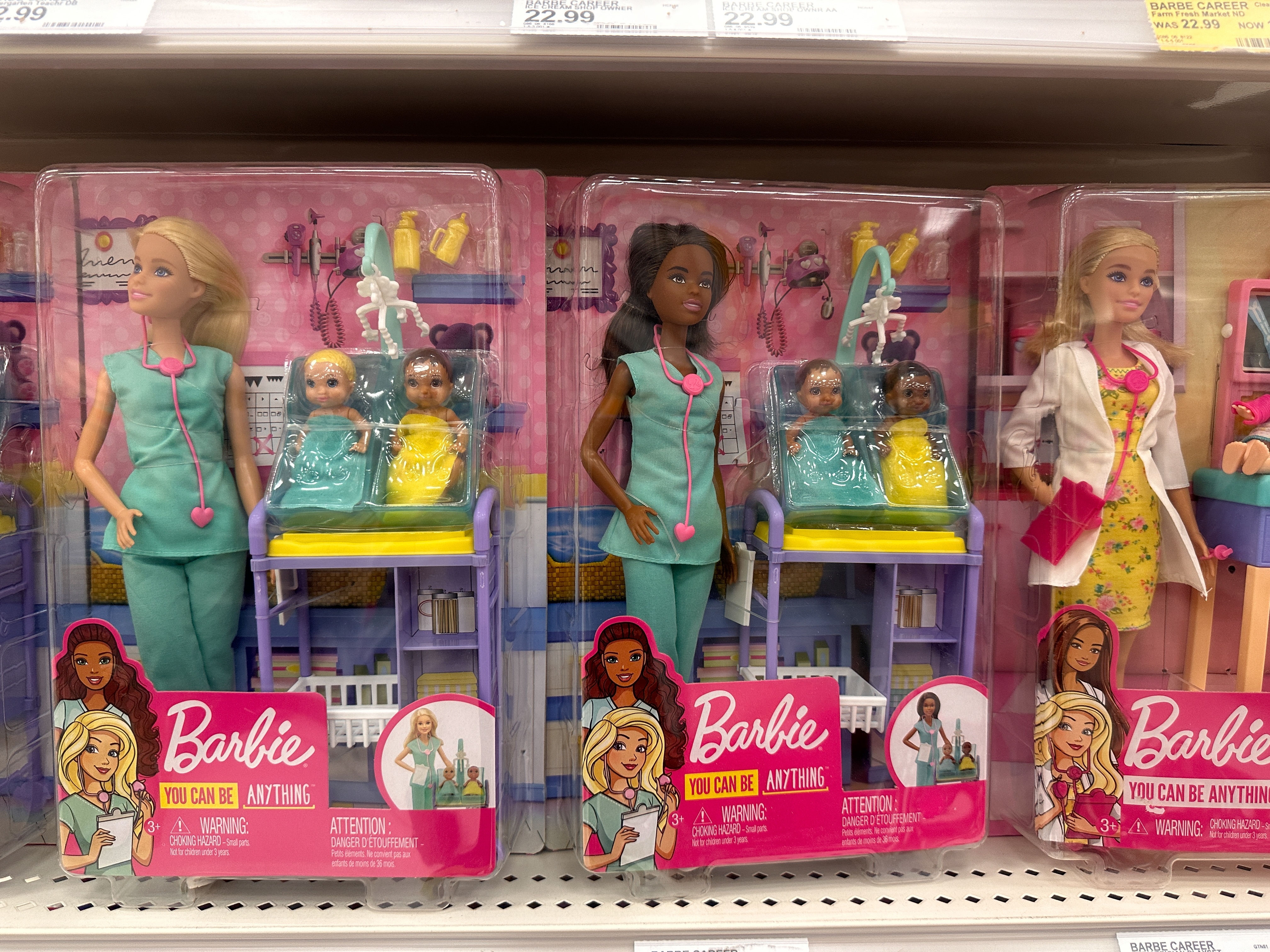Barbie may have a PhD, an MD, a DO, an OD, a DNP, a DDS, a DVM, a JD, an MSc, and an MBA to her name, but it seems there are some pieces of basic lab and hospital safety that have passed her by, according to a new study published in the Christmas issue of The BMJ.
You know that old riddle, where a boy and his father are in a terrible car crash, and the father dies, and the kid is rushed to hospital for surgery, and the surgeon says, “I can’t operate on this patient; he’s my son”? You want to guess how many people – in 2022, mind you – managed to deduce that the surgeon might be the boy’s mother?
Fewer than one in five. It turns out that, even two decades into the “enlightened” 21st century, we’re still more inclined to think girls should want to grow up to become Barbie than a trauma surgeon.
Of course, there’s no reason those two things should be mutually exclusive, points out Katherine Klamer, sole author of the new study. After all, Barbie has already been a construction worker, a teacher, an Olympic gymnast, a veterinarian, the spirit of Pepsi, a judge, Totally Hair, and a Civil War battlefield nurse, to name but a few of her previous vocations – why shouldn’t she branch out even further?
Well, unfortunately, the answer to that may have something to do with society’s latent sexism. “Female medical students are still disproportionately discouraged from pursuing surgical careers even at prestigious institutions,” point out Sareh Parangi, an endocrine surgeon and Professor of Surgery at Harvard Medical School, and her colleagues in an editorial accompanying the study. And despite her full and far-ranging career history, they argue, Barbie is just as guilty as the rest of us when it comes to underestimating women in the workplace.
“Perhaps a childhood of playing with neurosurgeon Barbie or trauma surgeon Barbie could inoculate girls against sexist career assumptions and advice,” they write. “Instead, the current cadre of generalist Barbies that treat primarily children simply reinforces outdated concepts of gendered medical specialties.”
It’s even worse if you’re hoping to see your disability or non-white ethnicity reflected in your mini-me: Barbie career dolls were mostly white and 100 percent without visible disabilities. Medical doctor Barbies overwhelmingly worked in pediatrics or just general “medicine”, with three ophthalmologists being the only ones with any obvious specialty.
“The existence of Barbie’s friends Ella (a cancer survivor) and Becky (a wheelchair user), as well as the growingly diverse Barbie Fashionistas line (which includes unnamed dolls with hearing aids, Down Syndrome, alopecia areata, prosthetic limbs, and vitiligo)… would imply that oncologist, orthopedic, audiologist, dermatologist, cardiologist, and neurosurgeon Barbies exist,” writes Klamer.
However, “Doctor Barbie and Ken dolls have only been depicted as generic or pediatric physicians, dentists, nurses, and ophthalmologists,” she notes. “Specialist dolls would provide all children with a richer view of the medical field and further highlight children’s future career possibilities.”
But while Parangi and her team “encourage and would welcome the creation of a surgeon Barbie,” the miniature medic may have to attend some pretty intensive training courses before she enters the field.
“If these Barbies were real, all the academic achievements in the world would not allow them inside a single medical research or educational laboratory because they all, in some form, fail to follow basic laboratory safety protocol,” Klamer writes. All of them wore their hair loose, for example, and only one wore a proper lab coat – “[one] of the most basic forms of personal protective equipment,” Klamer noted, “required in many laboratories where scientists work with chemical and biological samples.” Most wore high heels that didn’t properly cover the feet, and jewelry, while none wore gloves.

Not a hair tie among ’em.
Image credit: melissamn/Shutterstock.com
And yes, it may seem nitpicky – but people have literally died from not following these simple procedures. “By failing to depict Barbie and Nikki following proper laboratory safety protocols, Mattel made the characters seem needlessly irresponsible,” Klamer wrote.
And that’s a shame, since without Barbie as a potential role model, some kids may never even realize certain careers are options for them.
“Many surgeons fondly recall performing their first ‘operation’ on a favorite toy,” write Parangi et al. “Currently missing from Mattel’s offerings, surgeon and nuclear physicist Barbies, outfitted with proper equipment and tools, could plant the seed of an idea in a young child’s mind that they can be in these professions too.”
“We… would be happy to advise Mattel on the correct accompanying equipment and PPE,” they add, “to make sure the doll is realistic and fun.”
The study is published in The BMJ. The editorial is also published in The BMJ.
Source Link: Your STEM Barbie Is Terrible At Her Job And Needs To Branch Out, Career-Wise